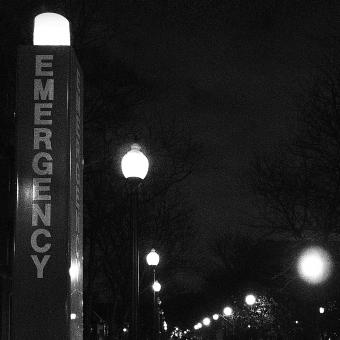Catholic colleges are learning the right way to answer when a victim of sexual assault calls for help.
Student Elizabeth “Lizzy” Seeberg committed suicide on September 10, 2010, 10 days after she’d claimed a University of Notre Dame football player fondled her against her will. The details leading up to her death rocked both campuses and devastated her parents.
Despite complaints from Seeberg’s family that they acted too slowly in investigating her complaint, Notre Dame officials have declined to comment on her case specifically, citing her privacy rights. The attorney of the accused student maintains his innocence. Whether Notre Dame’s mishandling of the situation factored in Lizzy’s suicide remains in dispute.
But one thing is clear: The high-profile case prompted the U.S. Department of Education to launch an investigation of how Notre Dame handles sexual assault cases.
Notre Dame isn’t alone. Colleges and universities nationwide are under growing pressure from the federal government and rape victim advocates to tighten up their sexual misconduct policies and practices.
Amid the sexual “hook-up culture” rampant on many of today’s campuses, experts say the atmosphere may be more conducive than ever for sexual assault. Catholic institutions must navigate this terrain while upholding church doctrine that prohibits premarital sex in the first place.
On notice
After a series of reports on the Seeberg case by the Chicago Tribune, ABC News, and prominent bloggers, the Department of Education’s Office for Civil Rights (OCR) launched an investigation of Notre Dame’s policies and procedures regarding sexual harassment, including sexual violence. The OCR in July announced it had reached a settlement agreement with Notre Dame. The agency found that Notre Dame already was doing many things right but could improve in some ways.
Specifically the agreement requires the university to ensure that students and the public know how to report sexual harassment and what to expect from the university and law enforcement after making such a report. Notre Dame agreed to make clear that it will use a “preponderance of evidence” standard to evaluate allegations of sexual harassment and assault, and to initiate and conclude investigations within 60 days.
The agreement also requires Notre Dame to create a separate room for complainants to appear before a disciplinary review panel so that they do not have to face their alleged perpetrators, and it gives complainants the same appeal rights that accused students enjoy.
When announcing the settlement, the Department of Education’s assistant secretary for civil rights, Russlynn Ali, said, “We launched this investigation to ensure that college students have an educational environment free from sexual violence and other forms of sexual harassment.”
Notre Dame spokesperson Dennis Brown says the university needed to fine-tune what it already was doing to prevent, investigate, and sanction sexual misconduct by students.
“We needed to organize our programs and services we have and communicate them in a more organized way,” Brown says.
‘Dear Colleague’
Notre Dame’s settlement announcement came three months after the OCR sent colleges and universities another signal that the Barack Obama administration places a high priority on campus safety. In April the agency issued a letter to all institutions of higher education, known as the “Dear Colleague” letter, informing them of their responsibilities under Title IX of the Education Amendments of 1972. The law requires schools to provide an educational environment free of sexual harassment and sexual violence.
Brett Sokolow, a Malvern, Pennsylvania-based attorney and consultant who helps colleges design and implement sexual misconduct policies and procedures, applauds the move.
“What OCR has done is finally to promulgate guidance that reflects the substance of its enforcement,” says Sokolow, managing partner at the National Center for Higher Education Risk Management. “To date, that enforcement has been accomplished campus by campus, without public dissemination of the findings and compliance requirements. We’ve had to read tea leaves to discern OCR’s expectations. Now we have greater clarity on a number of key issues.”
For example, the Dear Colleague letter declares that disciplinary actions in sexual assault cases should hinge on a “preponderance” of the evidence—meaning the assault more than likely occurred—rather than the criminal justice system’s more stringent “clear and convincing evidence” standard many colleges had long used, which placed a heavy burden on the accuser.
Sokolow also notes a commonplace tendency to blame victims. “We don’t ask the victim of a purse robbery whether she tried to stop the robber, but we do ask victims of sexual assault questions that imply or impose a duty to resist, object, fight, or otherwise protest,” Sokolow says. “Good policy should be based on consent, and the presence of consent or sexual permission isn’t shown by the absence of resistance.”
At Catholic University of America in Washington, D.C., the school’s sexual assault policy clearly states its support for the church’s teaching against premarital sex. Still, a situation in which a student claims she consented to some level of sexual contact, but not the level that occurred, does not pose a challenge for upholding church doctrine, says Jonathan Sawyer, associate vice president for student life and dean of students.
“From the president on downward, the policy that is expressed is as follows: sexual relations are reserved for marriage between a man and a woman,” Sawyer says. “At the same time, there are no ‘levels of consent’ when it comes to sexual assault and rape. There either is explicit, ongoing, meaningful consent or there is not.”
Sawyer points to the university’s Catholic identity as the foundation for the community’s responsibility to prevent sexual assault. “Using a parable such as the Good Samaritan and highlighting various aspects of Catholic social teaching, we are able to engage in dialogue that connects our values as a Catholic community to our responsibility to act on behalf of those who are, or may become, victims,” he says.
Ounce of prevention
In her book Sex and the Soul (Oxford University Press), Donna Freitas, Hofstra University associate professor of religion, describes the hook-up culture now prevalent on many campuses. She has found that today’s students often are engaging in casual sex or making out at parties, not because they necessarily want to, but because they think they must participate in order to “make their way socially,” she says.
“Hook-up culture is not a culture of consent, so right there you have problems,” she says. “Often students don’t want to participate in hook-up culture in the first place, but they feel obligated because they don’t think anything else is available on campus. Consent in that sort of context is very complicated.”
Add alcohol to the scene, as is often the case, and consent is even more difficult to pinpoint, Freitas says.
“Colleges across the country are extremely concerned about sexual assaults on campus and the hook-up culture, but I’m not sure yet whether we’re doing a good job of putting those conversations together,” she says.
The key to addressing sexual assault proactively and creating a culture that is supportive of women and victims is to invest heavily in prevention, Sokolow says.
“In higher education, we are producing reams of research on what works, and it is catching on,” he says. “We can prevent victimization through a number of models of prevention, including the ecological model, social norming, bystander intervention, and anti-oppression work.”
The University of San Diego, a Catholic institution with an enrollment of 7,800, employs all four of those approaches, says Moisés Barón, assistant vice president for student affairs for student wellness. Barón says the university began focusing more intently on the issue in 2007, taking guidance from the American College Health Association’s toolkit, “Shifting the Paradigm: Primary Prevention of Sexual Violence.”
“That really helped inform the development of a comprehensive program,” Barón says. “There were things we were doing already . . . and a number of things we needed to start doing more.”
The “ecological model” involves three prongs: the individual, his or her physical environment, and the social environment. The school provides information the individual can use to guide his or her own behavior; explains the university’s expectations, policies, and protocols; and teaches students about creating social norms and a culture without sexism.
“Social norming” means giving students, especially incoming freshmen, more accurate information about how their peers behave. For example, many new students overestimate how much other students use alcohol and illegal drugs, Barón says. Because about 85 percent of sexual assaults involve alcohol or drug use by one or both individuals, the school strives to reduce that risk factor by reducing the social pressure to drink and use drugs.
With “anti-oppression work,” students learn how a culture of sexism, evidenced by things as seemingly innocuous as jokes that demean women, can create a “slippery slope” toward sexually aggressive behavior toward women, Barón says.
The University of San Diego delivers these messages through a mandatory online course that new freshmen take before arriving in the fall, orientation week programs, training for residential assistants, and programming throughout the year offered in partnership with student groups, such as Greek fraternities.
Because so many sexual assaults go unreported, Barón says it’s difficult to determine whether these prevention strategies have decreased their frequency. But surveys indicate that about 85 percent of students report having heard the school’s anti-drug and alcohol messages, while about 68 percent say they are aware of what the university tries to teach about sexual assault prevention, Barón says.
Sokolow praises the University of San Diego’s efforts. He recommends hiring more than one prevention expert and funding prevention efforts on campus—not with thousands or tens of thousands of dollars—but with hundreds of thousands.
“You’ll spend that and more when a case goes poorly, so it makes more sense to invest it on the front end of prevention,” he says.
“Yet, to truly transform victim-blaming culture, we need to examine root constructs of masculinity and femininity, objectification of the human body, the continuum of sexual violence, and the deeper issues of what makes our society and our campuses rape-prone cultures. Very few campuses have the will to go that deep.”
On the same page
In 1998 Sokolow helped the College of the Holy Cross in Worcester, Massachusetts revamp its policies. The results there have drawn praise from victim advocates.
In 2008, Boston-based attorney Colby Bruno helped a Holy Cross student, Melandy, who asks that her last name not be used, pursue disciplinary charges against a male friend who she said had raped her in a public restroom after the two had been drinking. He told school officials that she had never said no.
Holy Cross has a policy requiring “affirmative consent” for sexual contact and states that kissing does not signal consent. The burden of proving that the complainant consented to the sexual contact lies with the accused. In a case with no physical evidence or witnesses, the school ultimately believed Melandy’s story and expelled the male student.
The college explains and defines “effective consent” throughout four of the six pages devoted to sexual assault, harassment, and exploitation in its student handbook. “Effective consent is informed, freely and actively given mutually understandable words or actions which indicate a willingness to participate in mutually agreed upon sexual activity,” the policy states.
That kind of language establishes the right climate for safety on campus, says Paul Irish, the college’s assistant to the vice president for student affairs and director of its Office of Student Conduct and Community Standards.
“Many schools will have similar policies,” Irish says. “I think it’s in the implementation of policy and the overall campus climate. There has really been campus engagement on it. There’s just a climate that this will not be tolerated on this campus.”
Bruno agrees.
“If you are the initiator, you had to get consent from the person for any type of sex you wanted to initiate,” says Bruno, who has made representing alleged rape victims, at no cost, the focus of her National Victim Rights Law Center. “A policy like that tells the student you should be careful and have consent that you can do this. The message from that is that everyone on this campus has to respect everyone else’s bodies and their wishes.”
Bruno also liked that Holy Cross expelled the student, something that doesn’t happen often in student sexual misconduct cases, according to a recent Center for Public Integrity investigation. The CPI interviewed 33 alleged campus rape victims. Only four of them said their perpetrators had been expelled.
“I’ve been involved in way too many cases where the perpetrator was not sanctioned, and that is a real problem,” Bruno says.
Sokolow notes, however, that more accused students are being disciplined than in the past. Colleges are finding about 55 percent of accused students guilty of violating codes of conduct, up from about 50 percent a few years ago, he says. For lower-level violations, such as verbal sexual harassment, colleges often look to educational options for resolution, including mediation and other processes that focus on conflict resolution. Colleges also look to disciplinary sanctions that educate the accused student in an effort to prevent recurrence, for both harassment and lower-level assaults, such as fondling.
For more serious assaults, colleges typically suspend or expel the student, knowing that even if there is a way to educate a rapist, it isn’t part of the educational mission of a college to attempt to do so.
“Some students attempt to withdraw prior to this outcome, but colleges are clamping down on this practice,” Sokolow says. Once suspended, many students transfer to other institutions, or take credits elsewhere until the suspension ends.
Catholic values
Like at Notre Dame, where Lizzy Seeberg’s family complained that the university did not promptly forward a case to law enforcement, the question of when to take a case outside campus walls has also played out at the Jesuit-run Marquette University in Milwaukee. In October 2010 and February 2011, female students there told campus security they had been sexually assaulted by student athletes.
The district attorney ultimately decided not to file charges, citing insufficient evidence, but in doing so he publicly criticized Marquette for its delay in reporting the cases to his office. Marquette officials in June acknowledged they had made mistakes and announced a new policy to more promptly share student sexual assault complaints with city police. (The Department of Education announced its own investigation of Marquette’s handling of the cases in November.)
“If we are true to our mission as a Catholic and Jesuit university, it is clear that we need to do better as a campus community, both to care for and watch out for each other and to support those who come forward to report a sexual assault,” Marquette’s new president, Jesuit Father Scott Pilarz, told students in an email during Sexual Assault Awareness Week. “As a result of the changes that began last spring, I believe that we are a university community better able to respond to the problem of sexual violence than ever before.”
Those changes included providing mandatory training for first-year students in sexual misconduct awareness and more extensive training for select students, including student athletes, members of Greek organizations, resident assistants, and other student groups; adding a full-time victim advocate to the Student Health Services staff; and strengthening sexual misconduct policies in the student handbook.
Desiree Valentine was among the Marquette students pushing hardest for the handbook revisions before graduating in 2010. Initially the policy was “pretty meager,” consuming less than a page of the student handbook, says Valentine. The topic now covers nearly three pages.
It wasn’t just the policy’s brevity that bothered Valentine. It was language at the very beginning, under the heading, “Sexual contact/sexual assault,” that most offended her and other women on campus. The policy noted Catholic doctrine stating that sex should take place only within the confines of marriage. Valentine didn’t necessarily disagree with that notion, but she felt references to premarital sex, which implies consent by both individuals, had no place in a sexual misconduct policy.
“Our goal was to separate that, put it somewhere else, and just deal with the sexual assault issue,” says Valentine, 23, now a graduate student at Penn State University. “If that’s the first thing they read in an assault policy, I’m not sure how much they would want to keep reading, at a time when they were hurting.”
Valentine says she doesn’t recall the Marquette administration directly opposing the changes, but “the actual separation took a while, and it was mostly people from the ground up trying to change it.”
Many student sexual misconduct cases involve acquaintances and alcohol use by both individuals involved. The need to avoid letting moral perspectives become victim-blaming is especially pertinent for Catholic schools, Sokolow says.
“While it may be immoral to allow a male student into your room against campus rules,” Sokolow says, “it is also immoral to compound a victim’s anguish by punishing her for collateral violations of campus rules in the aftermath of having her bodily sanctity violated. There is a critical difference between behaving irresponsibly and taking advantage of that person’s irresponsibility.”
Catholic writer Nicole Sotelo, author of the book Women Healing from Abuse (Paulist Press) and founder of a website of the same name, says the church has been emphatic about the dangers of recklessly treading this ground.
“Catholicism supports healthy relationships,” Sotelo says. “If a relationship turns violent—be it emotional, physical or sexual violence—the United States bishops and other Catholic leaders have made it clear that abuse and violence [are] a sin and should be condemned. Similarly, Catholic campuses should unequivocally condemn violence in relationships, ensure justice is sought, and healing is made available. The bishops are clear that there is no room for blaming the victim.”
Victim advocates
Despite such reassurances and the Obama administration’s approach, many victims on college campuses will remain silent. U.S. Department of Justice figures indicate that about one of every five women on a college campus will be victimized by sexual violence by the time they finish school. But fewer will come forward and report it.
“Victims understand, because they see it in the media, that when they report, their lives will change,” says Bruno, the victims’ attorney from Boston. “They will be scrutinized more than any other victim of any other crime in our country. You no longer have control of your life. Your control has been taken away, and then you almost give control to the institution to which you report.”
Eighty-eight percent of victims are assaulted by someone they know and trust. Victims are less likely to report an assault by someone with whom they have a relationship, Bruno says.
“It’s so important to have a qualified staff on campus. Schools have a very big responsibility to make sure that there is accountability and a solid investigation into the allegation.”
More schools are getting help from law enforcement in investigating sexual assault cases, but not enough for Bruno’s liking.
“People aren’t yet starting to adopt it as a best practice. It has become clearer to schools that they should get more help with these cases,” she says. “But you don’t see that there are enough schools doing it to make it a trend. I’m disappointed in most schools in how they handle these cases. It’s not because they don’t always find for the victim, but it’s so heavily in favor of the perpetrator. The balance is so unequal.”
Handling sexual assault disciplinary cases is something educators don’t find easy, she notes.
“Most see these as cases of misunderstanding or regret. When there is not specific education on sexual assault, it’s very difficult to look at a 19- or 20-year-old boy and say, ‘That person meant to do this.’ Who wants to believe that? I would much rather believe rape doesn’t happen. But it does, all the time.”
This article appeared in the January 2012 issue of U.S. Catholic (Vol. 77, No. 1, pages 12-17).
Image: Tom Wright














Add comment